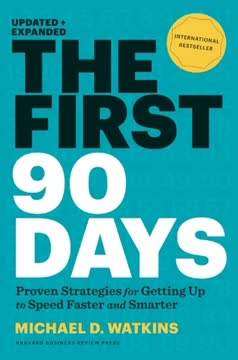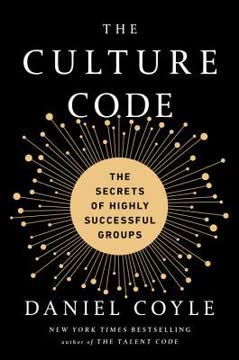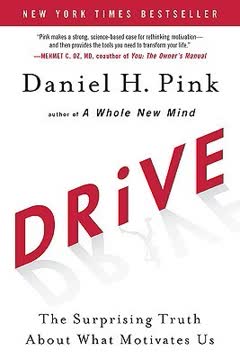つの重要なポイント
1. 効果的なリーダーになるための強力な質問の技術を習得する
開始時の課題をすぐに解決しようとする誘惑を管理する方法が必要です。
コーチング習慣。 本書は、即座に解決策を提供するのではなく、強力な質問をすることに焦点を当てた新しいリーダーシップアプローチを紹介します。アドバイスを与えるのではなく、好奇心に基づいた問いかけにシフトすることで、リーダーはチームの潜在能力を引き出し、より大きな自律性と成長を促進することができます。
7つの重要な質問。 このアプローチの核心は、慎重に作成された7つの質問にあります:
- あなたの心にあることは何ですか?(キックスタート質問)
- それ以外には?(AWE質問)
- あなたにとっての本当の課題は何ですか?(フォーカス質問)
- あなたは何を望んでいますか?(基礎質問)
- どうすれば助けられますか?(怠け者質問)
- これに「はい」と言うなら、何に「いいえ」と言いますか?(戦略質問)
- あなたにとって最も役立ったのは何ですか?(学習質問)
これらの質問を習得することで、リーダーはより意味のある会話を生み出し、チームメンバーが自分自身の解決策を見つけるのを助け、最終的には役割においてより効果的になることができます。
2. 意味のある会話を始めるための「キックスタート質問」を使用する
「あなたの心にあることは何ですか?」は、最も重要なことについて話しましょうという意味です。
オープンでありながら焦点を絞る。 キックスタート質問「あなたの心にあることは何ですか?」は、強力な会話のスタートポイントとして機能します。これは、相手が最も重要だと思うことを持ち出すのに十分オープンでありながら、無意味な雑談を避けるのに十分焦点を絞っています。
3Pモデル。 会話をさらに焦点化するために、3Pモデルを使用します:
- プロジェクト:状況の内容
- 人々:関係と相互作用
- パターン:行動と作業方法
この質問とモデルを使用することで、リーダーは迅速に意味のある議論に入り込み、チームメンバーが直面する最も差し迫った問題に対処することができます。
3. 「AWE質問」を使用してより多くの選択肢と洞察を生み出す
「それ以外には?」—AWE質問—には魔法のような特性があります。
潜在能力を引き出す。 AWE質問「それ以外には?」は、シンプルでありながら強力なツールであり、より多くのアイデアと洞察を生み出します。この質問を何度も繰り返すことで、リーダーはチームメンバーが最初に考えなかった選択肢を見つけるのを助けることができます。
AWE質問の利点:
- より多くの選択肢を生み出し、より良い決定を導く
- リーダーの「アドバイスモンスター」を抑え、好奇心を促進する
- リーダーが情報を処理する時間を稼ぐ
- 深い思考と反省のための空間を作る
この質問を会話で少なくとも3回は尋ねることを目指し、話題を十分に探求します。
4. 「フォーカス質問」で本当の課題に焦点を当てる
本当の問題に焦点を当て、最初の問題に焦点を当てない。
深く掘り下げる。 フォーカス質問「あなたにとっての本当の課題は何ですか?」は、リーダーとチームメンバーが直面している核心的な問題を特定するのに役立ちます。しばしば、最初に提示される問題は、対処すべき本当の課題ではありません。
一般的な落とし穴に対処する:
- 課題の増殖:一度に提示される問題が多すぎる
- ゴーストのコーチング:実際の問題ではなく第三者について議論する
- 抽象化と一般化:曖昧で高レベルな議論
フォーカス質問を使用することで、リーダーはこれらの曖昧な状況を切り抜け、本当の課題に焦点を当て、より効果的な問題解決と意思決定を行うことができます。
5. 「基礎質問」で本当の欲求を明らかにする
自分の自由に責任を持つことは非常に難しいことです。
大人同士の会話。 基礎質問「あなたは何を望んでいますか?」は、職場での成熟した生産的な関係の中心にあります。これは、人々が自分のニーズと欲求に責任を持つことを奨励します。
回答の難しさ:
- 人々はしばしば自分が何を望んでいるのか分からない
- 自分が望むものを尋ねるのは難しいことがある
- 欲求を明確に伝えるのは難しい
- 「いいえ」と言われるのは不快なことがある
この質問を定期的に尋ねることで、リーダーは明確さ、率直さ、相互尊重の文化を育み、より効果的な協力と問題解決を促進することができます。
6. 「怠け者質問」で過剰なコミットメントを避ける
どうすれば助けられますか?
リクエストを明確にする。 怠け者質問「どうすれば助けられますか?」は、2つの重要な目的を果たします。まず、相手に明確で具体的なリクエストをさせることを強制します。次に、リーダーが状況を完全に理解せずに行動に移るのを防ぎます。
「怠け者」であることの利点:
- 明確なコミュニケーションを促進する
- 不必要な作業や誤った支援を防ぐ
- リーダーがリクエストを実行できるかどうかを評価する
- チームメンバーが自分のニーズを考えるように促す
この「怠け者」アプローチを受け入れることで、リーダーは過剰なコミットメントを避け、努力が本当に役立ち、チームのニーズに合致していることを確認できます。
7. 「戦略質問」を使用して戦略的な決定を行う
「はい」と言うことは、それに境界と形を与える「いいえ」なしでは意味がありません。
慎重なコミットメント。 戦略質問「これに『はい』と言うなら、何に『いいえ』と言いますか?」は、リーダーとチームメンバーがより意図的な決定を行うのに役立ちます。これは、どのコミットメントにも伴うトレードオフを考慮することを奨励します。
考慮すべき「いいえ」の種類:
- 省略の「いいえ」:はいと言うことで自動的に排除される選択肢は何か?
- 実行の「いいえ」:はいを可能にするために停止または変更しなければならないことは何か?
この質問を定期的に尋ねることで、リーダーはチームが効果的に優先順位を付け、過剰なコミットメントを避け、努力が戦略的目標に合致していることを確認できます。
8. 「学習質問」で学びを定着させる
忘却のプロセスを中断することが重要です。
ダブルループ学習。 学習質問「あなたにとって最も役立ったのは何ですか?」は、会話や会議の終わりに反省と洞察の瞬間を作り出します。この質問は、即時の問題に対処するだけでなく、プロセス自体についての学びの瞬間を作り出す「ダブルループ学習」を奨励します。
学習質問の利点:
- 会話が有益だったと仮定し、ポジティブにフレーミングする
- 重要なポイントを特定することを奨励する
- 学びを個人的かつ主観的にする
- リーダーにフィードバックを提供する
- 相互作用の価値を強化する
この質問を一貫して使用することで、リーダーはチームメンバーが各相互作用から最大の価値を引き出し、スキルと知識を継続的に向上させるのを助けることができます。
9. 新しい習慣を築き、リーダーシップアプローチを変革する
新しい習慣を抽象的でやや曖昧な方法で定義すると、効果が得られません。
新しい習慣の公式。 行動を効果的に変え、コーチング習慣を実装するために、リーダーは次の公式を使用するべきです:
- トリガーを特定する:これが起こったとき...
- 古い習慣を特定する:代わりに...
- 新しい行動を定義する:私は...
習慣形成の成功の鍵:
- トリガーと新しい行動を具体的にする
- 新しい習慣を短く保つ(60秒未満)
- 繰り返しとマインドフルネスを通じて深く練習する
- 挫折に備え、軌道に戻る方法を計画する
これらの強力な質問を中心に新しい習慣を意識的に築くことで、リーダーは管理とコーチングのアプローチを変革することができます。
10. エンゲージメントの神経科学を受け入れ、より良い関係を築く
無意識のレベルで、脳は1秒間に5回、周囲の環境をスキャンし、自分にとって安全か危険かを判断しています。
TERAモデル。 エンゲージメントの神経科学を理解することで、リーダーはより良い関係と生産性を促進する環境を作り出すことができます。TERAモデルは、エンゲージメントの4つの主要な推進要因を概説しています:
- トライブ:あなたは私と一緒にいるのか、それとも反対しているのか?
- 期待:何が起こるかを知っているか?
- ランク:私の相対的な重要性は何か?
- 自律性:選択肢があるか?
リーダーシップにおけるTERAの適用:
- トライブと自律性の感覚を高めるために質問をする
- 可能な限り明確な期待を提供する
- アクティブリスニングを通じて他者の地位を尊重し、向上させる
- 選択肢を提供し、独立した問題解決を奨励する
これらの神経学的推進要因を考慮に入れることで、リーダーはチームにとってよりエンゲージングで生産的かつポジティブな作業環境を作り出すことができます。
最終更新日:
FAQ
What's "The Coaching Habit" about?
- Purpose of the Book: "The Coaching Habit" by Michael Bungay Stanier is about transforming managers and leaders into more coach-like figures by encouraging them to stay curious longer and rush to action and advice-giving more slowly.
- Core Concept: The book introduces a simple yet challenging habit: asking more questions and giving less advice to foster better leadership and management.
- Practical Approach: It provides a fast and practical read, offering seven essential questions that can be used to improve coaching skills in everyday interactions.
- Not Just for Coaches: The book is designed for anyone in a leadership role, not just professional coaches, aiming to enhance their ability to support and develop their teams effectively.
Why should I read "The Coaching Habit"?
- Improve Leadership Skills: The book offers practical tools to become a more effective leader by adopting a coaching mindset.
- Enhance Team Performance: By using the seven questions, leaders can help their teams become more self-sufficient and focused on meaningful work.
- Reduce Overwhelm: It provides strategies to manage workload better and avoid becoming a bottleneck in the organization.
- Build Better Relationships: The book emphasizes the importance of adult-to-adult conversations, helping leaders build more authentic and productive relationships with their teams.
What are the key takeaways of "The Coaching Habit"?
- Seven Essential Questions: The book revolves around seven questions that help leaders coach more effectively by focusing on what truly matters.
- Habit Building: It emphasizes the importance of building a coaching habit through understanding triggers, practicing deeply, and planning for setbacks.
- Focus on Development: The book distinguishes between coaching for performance and coaching for development, encouraging leaders to focus on the latter for long-term growth.
- Engagement and Impact: By asking the right questions, leaders can increase engagement, reduce dependency, and have a greater impact on their teams.
What are the seven essential questions in "The Coaching Habit"?
- The Kickstart Question: "What's on your mind?" to open up meaningful conversations.
- The AWE Question: "And what else?" to explore more options and insights.
- The Focus Question: "What's the real challenge here for you?" to identify the core issue.
- The Foundation Question: "What do you want?" to clarify needs and desires.
- The Lazy Question: "How can I help?" to offer support without taking over.
- The Strategic Question: "If you're saying Yes to this, what are you saying No to?" to prioritize effectively.
- The Learning Question: "What was most useful for you?" to reinforce learning and reflection.
How does "The Coaching Habit" suggest building a coaching habit?
- Identify Triggers: Recognize the moments that prompt old habits and use them to initiate new behaviors.
- Practice Deeply: Focus on small, specific actions that can be repeated and refined over time.
- Plan for Setbacks: Accept that mistakes will happen and have a plan to get back on track.
- Use the New Habit Formula: Combine triggers, old habits, and new behaviors to create lasting change.
What is the difference between coaching for performance and coaching for development in "The Coaching Habit"?
- Coaching for Performance: Focuses on addressing and fixing specific problems or challenges, often short-term and task-oriented.
- Coaching for Development: Shifts the focus to the person dealing with the issue, aiming for long-term growth and learning.
- More Powerful Conversations: Development coaching is more impactful as it encourages self-awareness and personal growth.
- Application of the 3P Model: Helps identify whether the focus should be on projects, people, or patterns to facilitate development.
How does "The Coaching Habit" address the issue of overdependence in teams?
- Encourages Self-Sufficiency: By asking questions instead of giving answers, leaders help team members find their own solutions.
- Reduces Bottlenecks: Leaders avoid becoming the sole problem-solvers, allowing the team to function more independently.
- Increases Autonomy: Team members gain a sense of mastery and control over their work, leading to higher motivation.
- Breaks Vicious Circles: The book identifies and provides strategies to break cycles of overdependence, overwhelm, and disconnection.
What role does neuroscience play in "The Coaching Habit"?
- Risk and Reward Response: The book explains how the brain constantly assesses situations as safe or dangerous, influencing engagement.
- TERA Quotient: Focuses on increasing Tribe, Expectation, Rank, and Autonomy to create a rewarding environment.
- Impact on Engagement: By asking questions, leaders can create a sense of safety and engagement, enhancing team performance.
- Learning and Memory: The book uses neuroscience to explain how asking questions can improve memory retention and learning.
What are some of the best quotes from "The Coaching Habit" and what do they mean?
- "Tell less and ask more." This quote encapsulates the book's core message of shifting from giving advice to asking questions to empower others.
- "We live in the world our questions create." It highlights the transformative power of questions in shaping our understanding and interactions.
- "What people think of as the moment of discovery is really the discovery of the question." This emphasizes the importance of asking the right questions to unlock insights and solutions.
- "Nothing is stronger than habit." It underscores the book's focus on building new habits to create lasting change in leadership behavior.
How does "The Coaching Habit" suggest handling the Advice Monster?
- Recognize the Urge: Be aware of the tendency to jump in with advice and solutions, often prematurely.
- Use the AWE Question: "And what else?" helps manage the impulse to give advice by encouraging further exploration.
- Stay Curious: Focus on asking questions and listening to the answers to keep the conversation open and productive.
- Practice Restraint: Develop the habit of holding back advice until it's truly needed, allowing others to find their own solutions.
How can "The Coaching Habit" help with strategic decision-making?
- The Strategic Question: "If you're saying Yes to this, what are you saying No to?" helps prioritize and focus on what truly matters.
- Clarifies Commitments: Encourages clear and committed Yes decisions, supported by necessary No actions.
- Avoids Overwhelm: Helps leaders and teams manage workload by making conscious choices about priorities.
- Aligns with Goals: Ensures that decisions are aligned with strategic objectives and long-term goals.
What additional resources does "The Coaching Habit" offer for further learning?
- My One Best Question Series: Features videos from business leaders and thought leaders sharing their best questions.
- Top-Shelf Management Books: A curated list of recommended books for further reading on self-management, organizational change, and strategy.
- Box of Crayons Lab: Offers insights and research sources for deeper understanding of the book's concepts.
- Online Tools and Videos: Provides access to videos and tools to help embed the learning and apply the book's principles in real life.
レビュー
本書『The Coaching Habit』は賛否両論を受けているが、多くの人々は7つの重要な質問を通じてコーチングに実践的なアプローチを取っている点を称賛している。読者はその簡潔な形式と実行可能なアドバイスを評価し、リーダーシップやコミュニケーションスキルの向上に役立つと感じている。一部の人々は、内容が繰り返しであったり深みが欠けていると批判している。多くの読者は、アドバイスを与えるのではなく質問をすることに重点を置いている点を重視している。本書の付随するビデオや他の作品への言及も概ね好評である。全体として、コーチングのマインドセットを育てたいと考える人々にとって有益なリソースと見なされている。
Similar Books


















